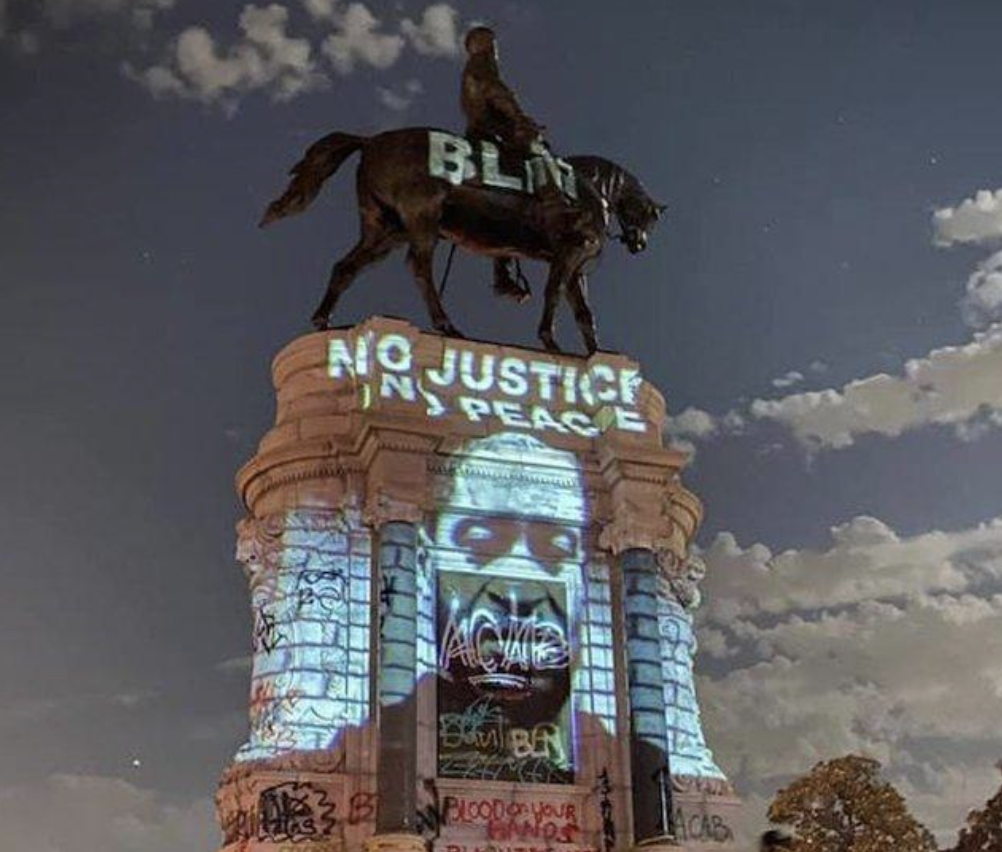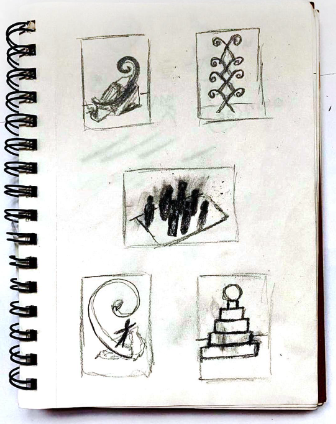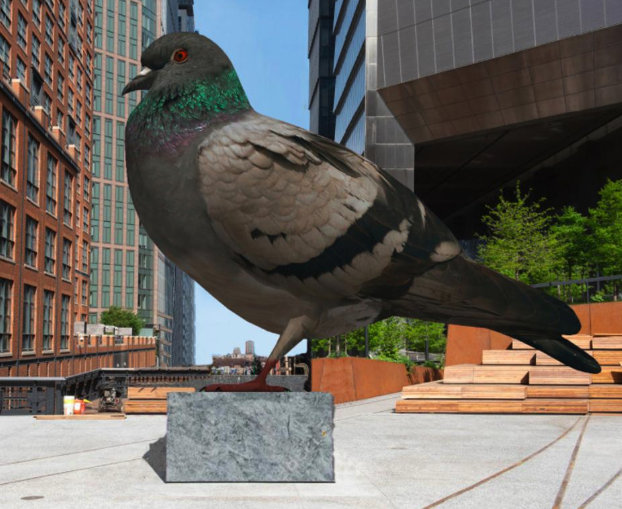Overview
Students will prepare for upcoming art-making lessons using close-looking, speaking, writing, and/or sketchbook prompts.
Materials and Tools
- Pencil
- Sketchbook or one to two pieces of paper
Activities
Note: The following activities are written with sample language you may use with your students. Following the art-making lesson, you may choose as many reflection activities as desired for students to work on in class or independently.
Step 1: Introduction and Discussion (10 minutes)
In this lesson, you will develop your monument concept through sketching. You will think deeply about the intent and meaning of your monument and brainstorm ways to represent your ideas through shapes and forms.

An image of George Floyd was projected on the base of the statue of Confederate General Robert E. Lee on Monument Avenue in Richmond, VA. The statue was the focal point of protests over the 2020 murder of George Floyd. The statue was removed in September 2021.
Monuments that celebrate our nation’s racist history are being taken down.
- What would you envision in their place?
Consider whose stories have not been commemorated and what monuments are missing.
Step 2: Writing (15 minutes)
- What kind of a monument do you want to build?
- Do you want to honor a person, an event, or an enduring ideal?
- What are the attributes of your person, place, or idea/ideal?
Make a list of all the words you can think of that relate to your idea. Look at your list.
- If you could only choose three words to represent your idea, which three would you choose?
Step 3: Sketchbook (20 minutes)
How can you represent your monument idea just by using shapes? Shapes can express different meanings. Let’s look at a circle, for example. Draw a circle.

What could a circle represent? Elicit students’ ideas. Ideas may include the world, the sun, or the head.
- What shapes could represent the idea behind your monument?
- How could you arrange your shapes to show balance, movement, or action?
Thumbnail sketches are small sketches that artists use to explore multiple ideas quickly. Create five quick thumbnail sketches that represent the three words that you chose to represent your monument idea. Play with different combinations and arrangements of your shapes.
After giving students time to create their thumbnail sketches, invite them to share.
- Which of your sketches do you think best represents your idea? Why?
Step 4: Close Looking (10 minutes)
Note to Teachers: Before teaching with a work of art, spend some time looking at it closely on your own. Familiarizing yourself with the artwork will prepare you to guide the close-looking activity.
If your students are new to looking at art together, you can introduce the activity to students in the following way:
Today we are going to spend some time looking at and discussing a work of art together. When we look at art, there are no right or wrong answers. I’m going to ask you to look closely, share your ideas about what you see, and listen respectfully to each other’s ideas. Everyone’s ideas are important. We all see things differently, and when we look at art, we can learn to see through each other’s eyes.

The High Line is a public park in Manhattan that exhibits contemporary art. Recently, they asked artists to create proposals for sculptures to exhibit in the park. Here is an image of a proposal by the artist Ivan Argote. Take a moment to look closely at the piece.
- What do you notice?
- Why do you think the artist chose to create a large-scale sculpture of a pigeon?
- Do you think this artwork should be exhibited at the High Line? Why or why not?
Vocabulary
Thumbnail sketch
Resources
Dustin Klein and Alex Criqui. Projections on the Confederate General Robert E. Lee on Monument Avenue in Richmond, VA: https://richmondmagazine.com/arts-entertainment/shining-a-light/
Learn more about the projection of George Floyd on the base of the statue of Confederate General Robert E. Lee in this Washington Post article
Learn more about Civil War monument removal in this New York Times article
Iván Argote, Dinosaur. https://www.thehighline.org/art/projects/ivan-argote/
High Line Plinth project artists’ shortlisted proposals for commissions
